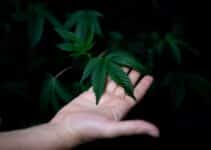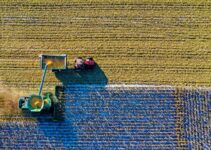I've discovered the top 5 tips for getting the most out of hemp-derived THC yields. From selecting the best strains to optimizing growing conditions, these strategies will help you maximize your harvest. Whether it's nutrient management or advanced extraction techniques, I'll guide you through the essential steps for boosting your hemp THC production.
Key Takeaways
- Prioritize strains with strong genetic potential for high cannabinoid production.
- Carefully monitor and adjust nutrient levels in growing environment for optimum absorption.
- Utilize the right light spectrum and control temperature to create an ideal environment for hemp plants.
- Implement integrated pest management techniques and regularly monitor crops to prevent infestations and ensure maximum THC yields.
Select High-Quality Hemp Strains
When selecting high-quality hemp strains for maximizing THC yields, I prioritize those with a strong genetic potential for high cannabinoid production. To achieve this, it's crucial to understand genetic characteristics and identify reputable suppliers. By partnering with reputable suppliers, I ensure that the hemp strains I select are of the highest quality, with the desired genetic traits for optimal THC yields. Understanding the genetic characteristics allows me to make informed choices, selecting strains with the potential for high cannabinoid production. This proactive approach significantly enhances the likelihood of maximizing THC yields, ultimately leading to a more successful hemp-derived THC production process. It's an essential step in ensuring that the hemp strains I work with are primed for achieving the desired THC levels, meeting the standards of quality and potency that are expected in the industry.
Implement Proper Nutrient Management
To ensure optimum THC yields, I implement proper nutrient management by carefully monitoring and adjusting the nutrient levels in the hemp plants' growing environment. Nutrient absorption is crucial for hemp plants to reach their full potential, and maintaining the right balance of nutrients is key. Soil pH management is also essential as it influences nutrient availability to the plants. Below is a table highlighting key nutrients and their roles in hemp plant growth:
| Nutrient | Role |
|---|---|
| Nitrogen | Essential for leaf and stem growth |
| Phosphorus | Promotes root development and flower formation |
| Potassium | Aids in overall plant health and disease resistance |
| Calcium | Supports cell wall structure and nutrient uptake |
| Magnesium | Essential for chlorophyll production and photosynthesis |
Optimize Light and Temperature Conditions
Now, I will focus on optimizing the light and temperature conditions to further enhance the hemp plants' growth and maximize THC yields. Light spectrum plays a crucial role in hemp cultivation. Utilizing the right light spectrum, including a combination of blue, red, and white light, can significantly boost THC production. Blue light encourages vegetative growth, while red light stimulates flowering and THC production. Additionally, controlling the temperature is essential for maximizing THC yields. Hemp plants thrive in temperatures between 68-77°F (20-25°C) during the vegetative stage and 60-72°F (15-22°C) during the flowering stage. Consistent temperature control ensures that the plants can efficiently photosynthesize and produce optimal levels of THC. By carefully managing the light spectrum and temperature, growers can create an ideal environment for hemp plants to flourish and increase THC yields.
Utilize Advanced Extraction Techniques
I will continue the discussion from optimizing light and temperature conditions to utilizing advanced extraction techniques, ensuring maximum THC yields. When it comes to advanced extraction techniques, there are several options to consider. Supercritical CO2 extraction is a popular method that uses carbon dioxide in a supercritical state to extract THC efficiently. Ethanol extraction techniques involve using ethanol as a solvent to pull out THC from the hemp plant material. Cryo ethanol extraction, a variation of ethanol extraction, utilizes extremely low temperatures to enhance the extraction process. Additionally, hydrocarbon extraction techniques, such as butane or propane, can also be employed to extract THC. These advanced techniques play a crucial role in maximizing THC yields from hemp. Now, let's transition to the subsequent section about 'monitor and manage pest control'.
Monitor and Manage Pest Control
Pest monitoring and management play a crucial role in safeguarding hemp crops and ensuring maximum THC yields. Integrated pest management techniques and pest-resistant genetics are essential for maintaining healthy hemp plants. Here's a practical approach to pest control:
| Pest Control Tips | Description |
|---|---|
| Integrated Pest Management | Implement a combination of biological, cultural, physical, and chemical control methods to reduce pest damage. |
| Pest-Resistant Genetics | Select hemp varieties with natural resistance to pests, minimizing the need for chemical interventions. |
| Regular Monitoring | Inspect crops frequently to detect pest issues early and take appropriate action to prevent infestations. |
Frequently Asked Questions
How Can I Ensure the Hemp Strains I Select Are High in THC and Suitable for Maximizing Yields?
To ensure high THC yields, I select strains with proven high THC content. Soil testing for THC levels is crucial for maximizing yields. It helps me adjust nutrient levels and create an optimal environment for high THC production.
What Are the Specific Nutrient Management Techniques That Should Be Implemented to Maximize THC Yields in Hemp?
To maximize THC yields in hemp, I ensure proper soil management and implement efficient watering techniques. This includes maintaining optimal pH levels, providing essential nutrients, and adjusting watering frequency based on plant needs for robust growth and potent THC production.
How Can I Optimize Light and Temperature Conditions for Hemp-Derived THC Production?
To optimize hemp-derived THC production, I focus on airflow and humidity levels for ideal conditions. I maximize light spectrum and intensity, ensuring the plants receive the necessary light for maximum THC yields.
What Advanced Extraction Techniques Are Most Effective for Maximizing THC Yields From Hemp?
To maximize THC yields from hemp, advanced extraction techniques like supercritical CO2 and ethanol extraction are effective. Additionally, selective breeding and genetic testing can enhance THC production in hemp plants.
How Can I Effectively Monitor and Manage Pest Control to Ensure Maximum THC Yields in Hemp Production?
To effectively monitor and manage pest control in hemp production, I employ monitoring techniques and select THC strains resistant to pests. I also prioritize nutrient management to ensure maximum yields and minimize pest-related damage.
Conclusion
In conclusion, maximizing hemp-derived THC yields requires careful strain selection, nutrient management, and environmental optimization. Additionally, utilizing advanced extraction techniques and effective pest control are crucial for achieving high yields. By implementing these tips, hemp farmers can maximize their THC production and ultimately improve the quality and quantity of their hemp-derived products.





